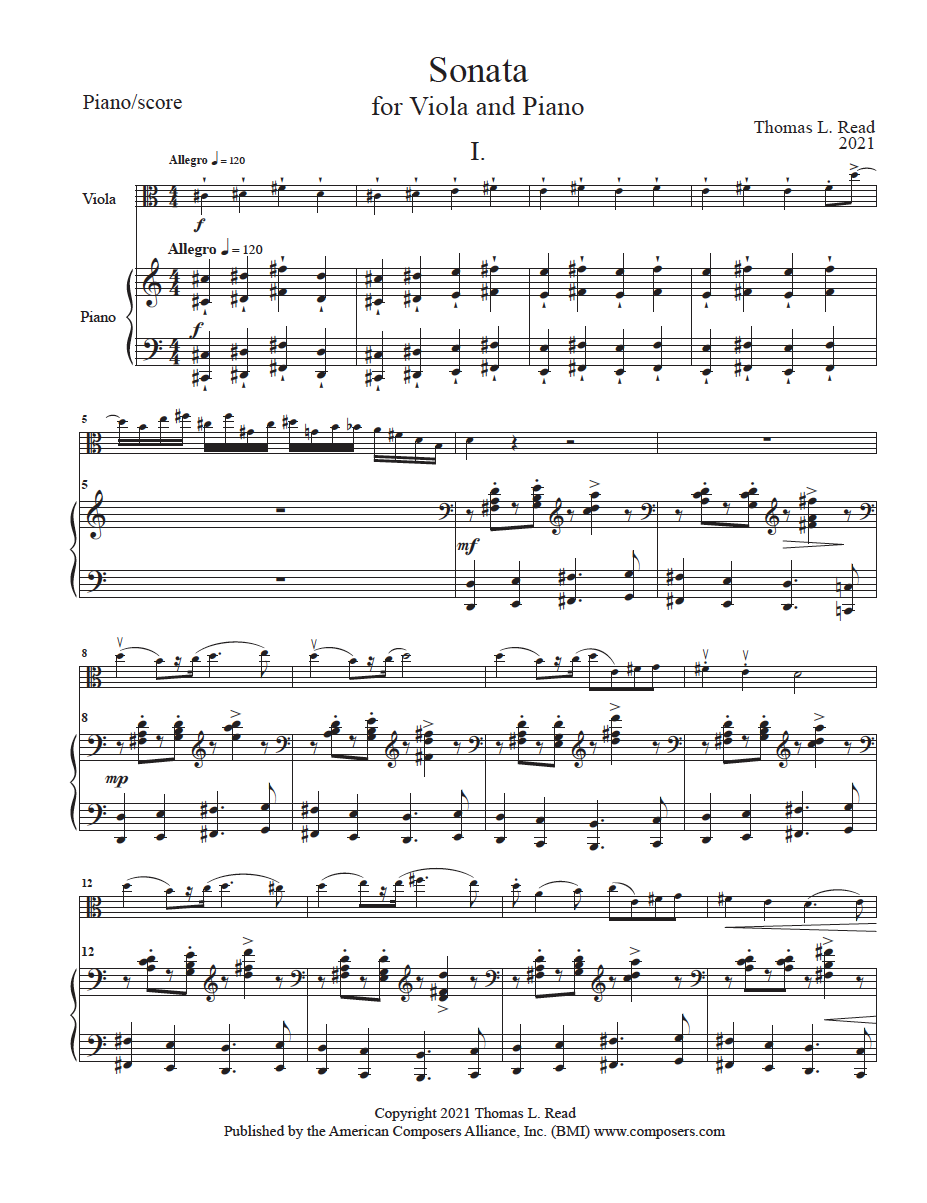Quick View
-
Files & Media
-
-
-
Detail
Composer's Note:
Sonata for Viola and Piano was composed in January and February, 2021. Intended to be a short piece for one of my wife’s viola students, it grew into a substantial two-movement work, suited for performance by advanced students and professional players. The first movement opens with a genial, catchy tune that quickly gives way to a dark, antithetical passage, harmonically and rhythmically compacted. All of this expository material, the genial and the dark, is then extended and transformed through free variation and superposition. Helpfully, terms normally associated with poetical verse allow summation of the movement’s large-scale design as an ordered cycle of strophe-antistrophe-strophe-antistrophe-epode. For me, some components of classical Greek choric drama, also associated with these terms, resonate with the spirit of my sonata. During the strophe of the choric ode the chorus chanted while moving from one side of the stage to the other. The antistrophe was chanted in the same metrical form but with reversed stage movement. The epode had a different metrical pattern and movement was stationary. In the case of my sonata, the first two movements are harmonically progressive and emphasize duple and then triple rhythmic and metric divisions; tempos move from fast to slow in the first movement and from fast to faster in the second. The appended “finale alternativo, ad libitum,” is harmonically static and polymetric.
In performance tempos and rhythms in the “strophic” sections of the first movement should be followed closely. Expressive freedom and tempo rubato are appropriate during the “antistrophes,” e.g, measures 17-24 and 57-85. The main body of the second movement can be more “motoric” than the initial section of the “finale alternativo.” As indicated in measure 204, “tempo giusto” should prevail to the end as flexible rhythmic pacing and polymetric groupings are fully notated. (As suggested, the sonata will effectively sound complete when the two movements are performed without the “alternativo.”)
-
-
-
-
-


Included in the collection Twenty-First Century Sonatas for Viola and Piano.